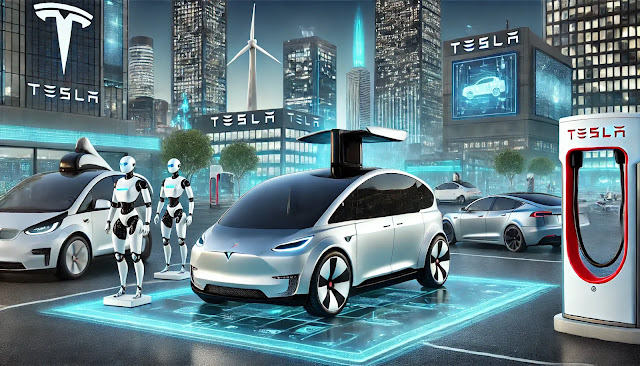Elon Musk Introduces Tesla's RoboVan and Advances in Robotaxi and Humanoid Robotics
Tesla’s Latest Innovations: RoboVan, Robotaxi, and Humanoid Robots - A Look Into the Future of Mobility
Tesla and Elon Musk continue to make headlines with groundbreaking innovations in transportation. In a recent reveal, Musk introduced the “RoboVan,” a fully autonomous, multi-use vehicle designed to transport people and cargo alike. This electric RoboVan brings together Tesla’s advancements in self-driving tech, with implications for both commercial and personal use.
What is Tesla’s RoboVan?
The RoboVan is an electric vehicle that operates without human intervention, blending Tesla’s technology with functionality suitable for a variety of applications. Targeted for both personal and commercial users, the RoboVan is envisioned as a part of Tesla’s fleet of future automated transportation options. With its enhanced capacity for cargo, it’s poised to offer a safe, efficient transport solution for goods and passengers.
Tesla’s Expanding Robotaxi Initiative
The RoboVan announcement coincides with Tesla’s continued push into the robotaxi industry. The concept of a robotaxi leverages Tesla’s fully autonomous driving features, allowing for a fleet of self-driving cars available for on-demand transport. Tesla’s robotaxis aim to reduce traffic congestion, lower emissions, and cut down on travel costs by maximizing the use of electric vehicles and efficient software.
Robotaxis would essentially function as shared rides, eliminating the need for drivers while offering reliable transportation. This initiative also aims to solve some of the modern problems in urban transportation, such as limited parking and high ride-sharing costs.
Humanoid Robots: Tesla’s Optimus and Beyond
In addition to the RoboVan and robotaxi advancements, Tesla has been exploring the development of humanoid robots, like the Optimus prototype. Optimus is a robot built for assisting with everyday tasks and potentially dangerous jobs, combining Tesla’s AI and robotics knowledge with a human-like form. These humanoid robots are intended to aid in industries such as healthcare, logistics, and customer service.
Optimus, according to Musk, could transform sectors reliant on human labor by taking on routine or hazardous tasks. This development represents Tesla’s long-term vision to have robots work alongside humans in various roles, enhancing productivity and safety.
Challenges and the Road Ahead
Tesla’s RoboVan, robotaxi, and humanoid robots each come with their challenges. For the RoboVan and robotaxi, further advancements in self-driving software and safety standards are essential. Public trust, regulatory hurdles, and infrastructure changes will also play significant roles in bringing these technologies into everyday use.
Meanwhile, humanoid robots require further development to reach Musk’s vision of full assistance across industries. Balancing AI safety, functionality, and ethical considerations will be key in determining how and where these robots are implemented.
Tesla’s Vision for the Future
Tesla’s innovations are reshaping how we think about transportation, labor, and human-machine interaction. Musk’s vision extends beyond making cars—it’s about creating a comprehensive ecosystem where robots and autonomous vehicles coexist with humans to improve daily life. With each innovation, Tesla aims to solve pressing issues in mobility, productivity, and environmental sustainability.
As Tesla pushes the boundaries of autonomous technology and robotics, the impact on industries and daily life could be profound. Musk’s vision of the future seems ambitious yet attainable, setting the stage for what might soon be a new era in tech-driven convenience and automation.












0 Comments